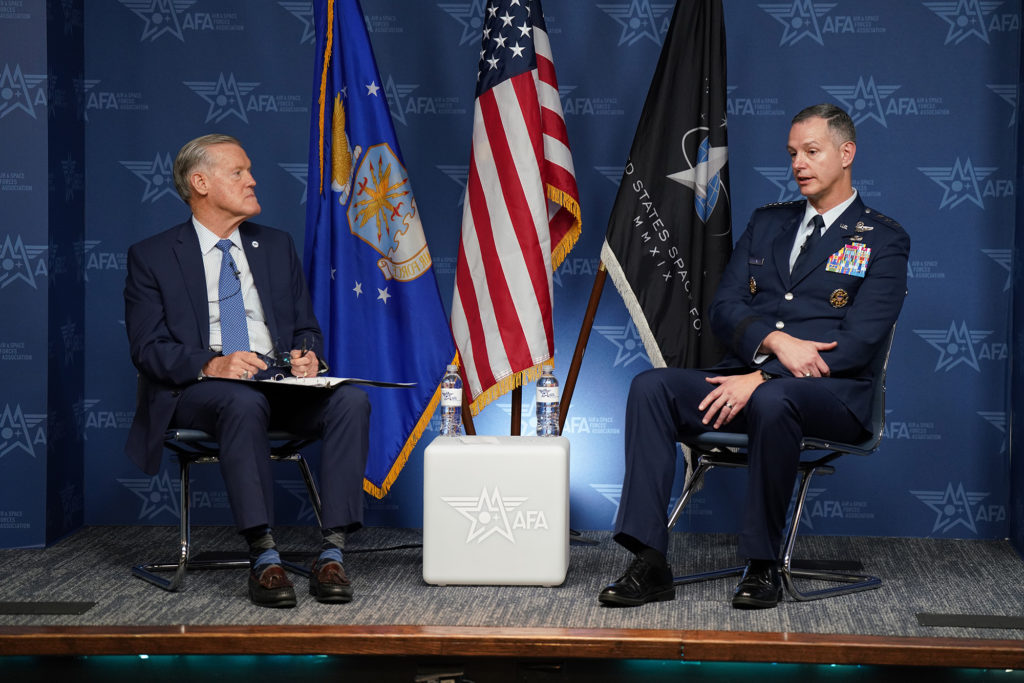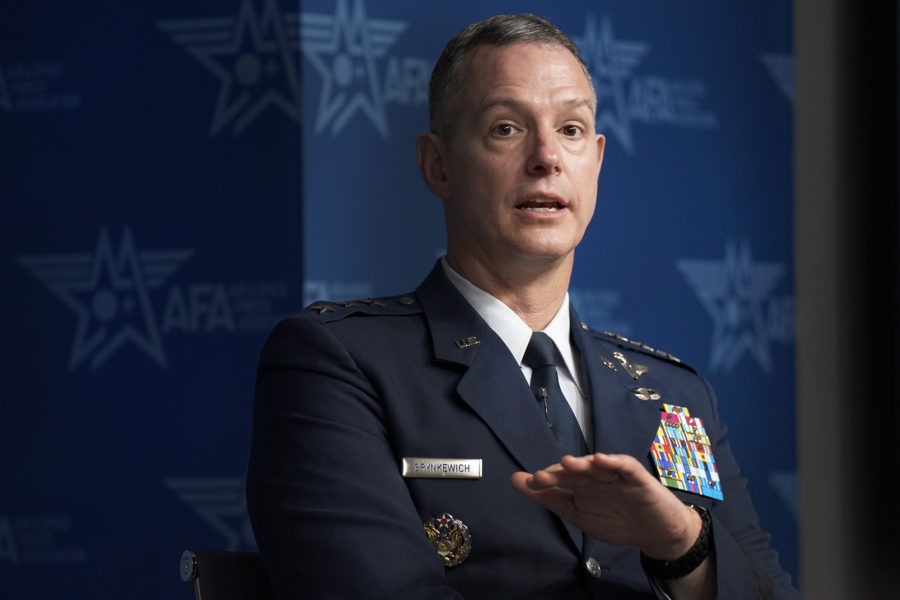The top Air Force commander for the Middle East supports the Pentagon’s broad shift in focus toward countering China, but sees a role for his command to help reassure regional allies and enhance the U.S. military capabilities in the region, he said Feb. 13.
Lt. Gen. Alexus G. Grynkewich, commander of Air Forces Central (AFCENT), said at an AFA Warfighters in Action event that Chinese investments, arms sales, and oil purchases have enabled Beijing to increase its influence in the region. But he has sought to counter those efforts by demonstrating the U.S. is a more dependable partner than China and Russia.
“We’re the enduring partner, we’re a partner of choice for them, we want a deep relationship based on shared interests,” Grynkewich said. “That’s much different from the Chinese approach. Unfortunately, we can always depend on the Chinese to be Chinese. Because when they show up, they’ll be transactional. You don’t get the depth of a relationship and after a few years are gone and the bridge they were building or fighters that you bought are falling apart.”
Earlier, Grynkewich told reporters at the Center for a New American Security that the U.S. had detected a Chinese balloon in the region last year, but it did not pass near U.S. military bases in the region and it was not clear if it was a surveillance or weather balloon. He declined to provide additional details but noted that other Chinese balloons have occasionally been detected transiting the Middle East region.
Grynkewich’s efforts to bolster the U.S.’s stature in the Middle East come amid concerns in some regional capitals that the area is becoming less of a priority for Washington than in past decades, when Washington’s principal focus was on counterinsurgency.
To strengthen its military capabilities in the region, CENTCOM and its components have sought to strengthen partnerships with nations in the region. They have experimented with the use of drones and other forms of innovation. And they have taken advantage of show-of-force exercises, like the recently concluded Juniper Oak multi-domain exercise with Israel, or quick injections of additional fighter aircraft and rotations of bomber task force missions.
“It does us well to think beyond our particular geographic region and think about the impacts of things that could happen outside of it,” Grynkewich said. “The place where we do that mostly is with respect to Russia and China.”
Even as the Pentagon focuses on China and Russia, the Middle East region presents complex challenges. That means Grynkewich’s job requires diplomatic skills as well as military acumen.
Iran has supplied Russia with drones for Moscow’s war in Ukraine. In return, it may be getting cash and military technology—Iranian news agencies claim the regime will receive Su-35 Flanker fighter jets from Russia, which would significantly complicate the threat Iran poses from the air. Iran currently has an aging air force dating back to the days before the 1979 revolution that overthrew the U.S.-backed Shah.

“The other interesting dynamic is in a way it is flipped,” Grynkewich added. “Who is the client state and who is the benefactor? I never thought that I would see when Russia was beholden in some way to the Islamic Republic of Iran, but that is kind of the dynamic that you have.”
Iranian-backed militias also present a threat. Grynkewich told reporters earlier in the day that Iran had planned to attack Saudi Arabia last year but pulled back when media reports of the intelligence about the threat came to light and the U.S. sent F-22 fighters to the region.
“The threat picture when you think about Iran has changed substantially from what it was even just five years ago,” Grynkewich said. “I don’t want to overstate the analogy, but in many ways, it’s very similar to what you would see in the Indo-Pacific from an operational level challenge. You have large numbers of ballistic missiles to hold your bases at risk, and the launchers for those ballistic missiles are protected by advanced integrated air and missile defense system that rivals anywhere in the world.”
Overall, Grynkewich said that while the Middle East may no longer be the focus of budgets or news stories, it is still a dynamic geopolitical landscape that matters, particularly in respect to America’s pacing challenge.
“China thinks the Middle East is important,” Grynkewich said. “That probably means we ought to think the Middle East is important.”
